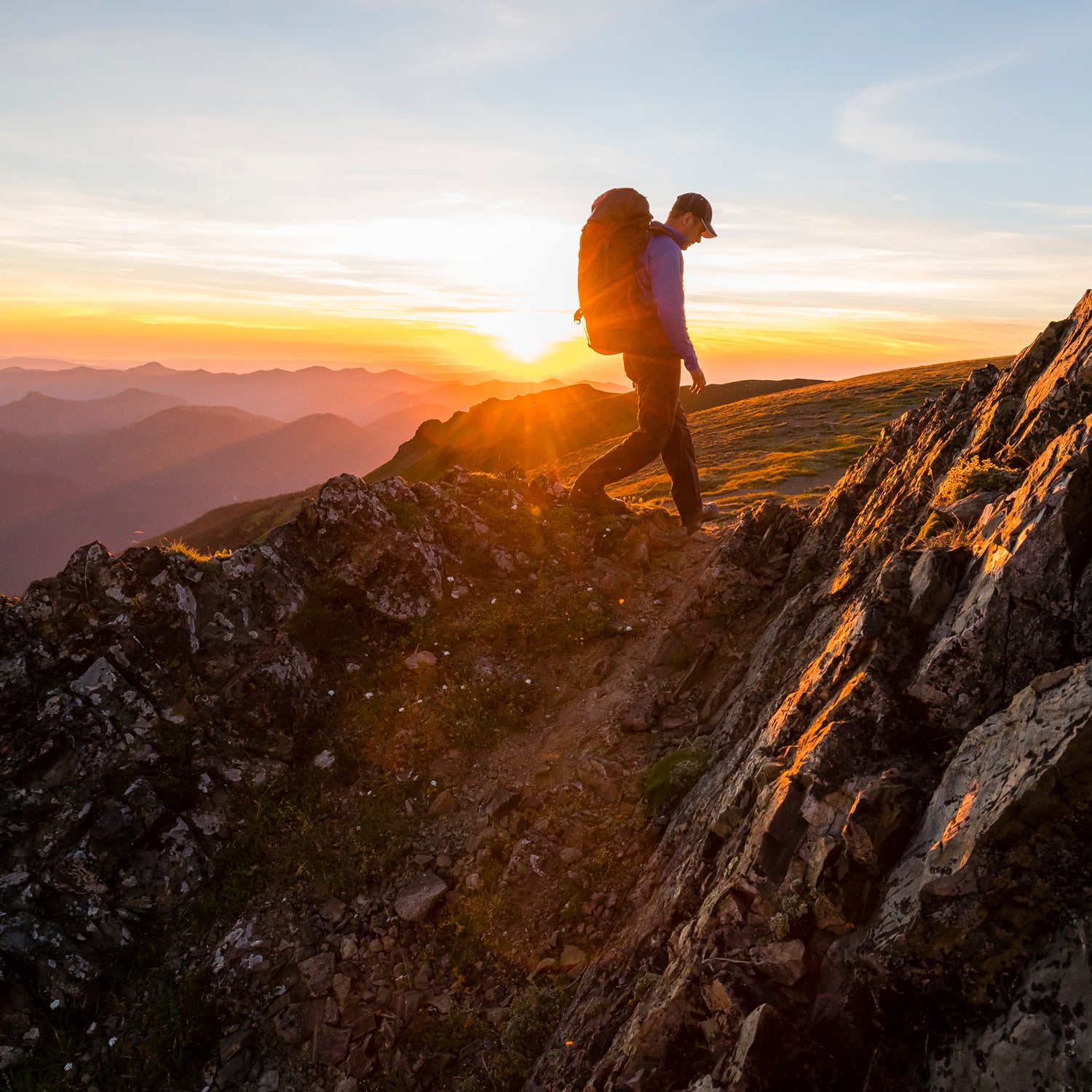I truly believe in high-quality merino socks. They make my feet less smelly and do a stellar job of managing temperature. For a more detailed explanation about why this piece of gear is so important, I reached out to two Appalachian Trail fastest-known time (FKT) holders. Then I called Lyn Feinson, director of design and development at , to get details about the brand’s manufacturing process. Here’s what they said.
Moisture Management
“Nothing causes blisters, chafe, and maceration like wet feet,” says Heather Anderson, the current unsupported FKT holder on the Appalachian Trail. (She hiked 2,168 miles in just 54 days in 2015.) Anderson likes wool because it moves moisture so well. It can hold up to 30 percent of its weight in water, so it sops up sweat and then allows it to evaporate into the air. Cotton has a much harder time getting rid of that blister-causing saltwater.
Tip: Make sure to match your socks with the right shoe. Waterproof shoes don’t breathe well enough in really hot climates—go sans liner if you’ll be hiking where temps get above 80 degrees.
Bacteria Management
Bacteria loves to grow in warm, wet, dark places—like your hiking boots. Over long miles, this can lead to foot rot. Wool is great at moving moisture but also prevents nastiness because the fatty acids in wool fibers gobble up the microbes that cause infections (and stink). Feinson says Darn Tough runs a test where they soak their socks in a bacteria that hikers might encounter on the trail; within an hour, 50 to 80 percent of the bacteria is gone.
Fit
Cheap cotton socks aren’t designed for long miles and have features like toe seams that will get you in trouble on the trail. Darn Tough says it eliminated the toe seam in its hikers and spent a lot of time engineering other parts of the sock as well. Its socks, as well as those from brands like , have highly specialized calf sections that snug around your leg but don’t feel like a vise. Both company’s heel cups are also designed to perfectly wrap your foot so no material bunches up to cause blisters.
Temperature Regulation
Wool works well when it’s hot and when it’s cold. During winter, the wool fibers trap air coming off your feet to keep them warm. When it’s hot, that evaporation process I mentioned above (sopping up the water, and then moving it off your skin) has a cooling effect that keeps your feet from melting inside your boots. This all-in-one feature is particularly helpful when you’re on a long expedition like the AT. “For a thru-hiker, having something that is going to work in the heat as well as [cooler] alpine environments is really helpful for me, so I don’t have to switch out my socks,” says Liz Thomas, who held the unsupported female FKT on the Appalachian Trail back in 2011.
Durability
Last year, I interviewed hikers on the Pacific Crest Trail who passed through my hometown of Ashland, Oregon. Almost all of them were wearing Darn Tough socks, because they would last several hundred—and even 1,000—miles. The secret? Darn Tough knits all of its socks with small-needle knitting machines that pack a lot of fine wool into a tiny space, making them tough but not bulky. Darn Tough socks, as well as those from companies like Fits and , also use nylon to reinforce high abrasion areas like the heel and the ball of the foot.
Feel
You can buy cheaper wool socks, but you want the hiker-specific ones from companies like Darn Tough, Fits, and Smartwool because they use finer-micron (smaller) wool that’s more comfortable and less itchy.
Money Savings
Over time, expensive socks save money because they last a lot longer. “It comes down to the math,” says Thomas. “If you’re out there for 2,000 miles, and you have the sort of socks that will only last you 100 miles—versus a 300- or 500-mile pair of socks—you’re going to end up spending a lot more on socks with a cheaper one.” She also points out that cheap socks cause blisters, which force you to buy products like and .


